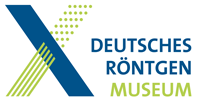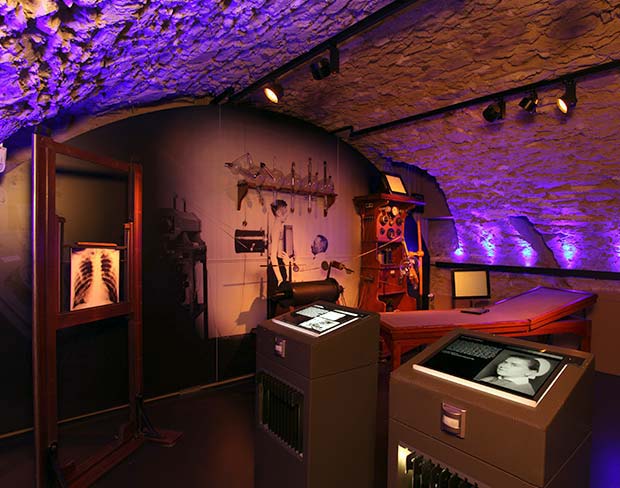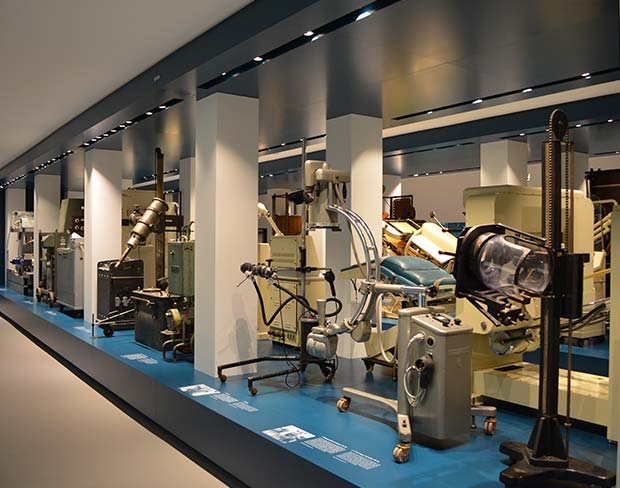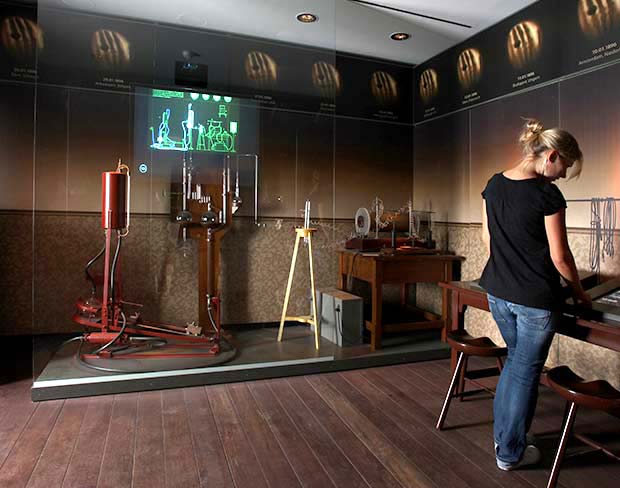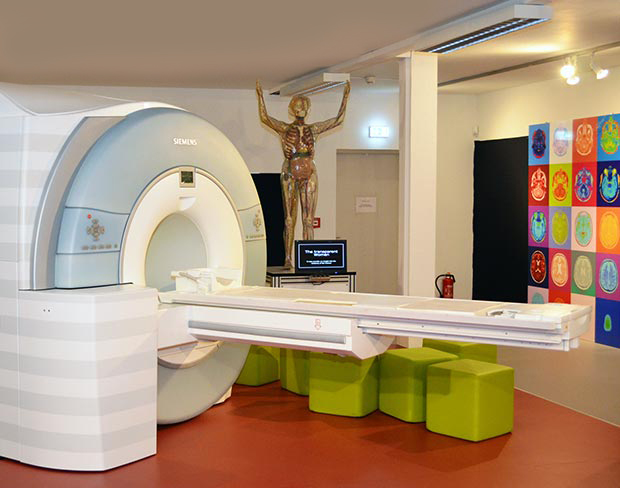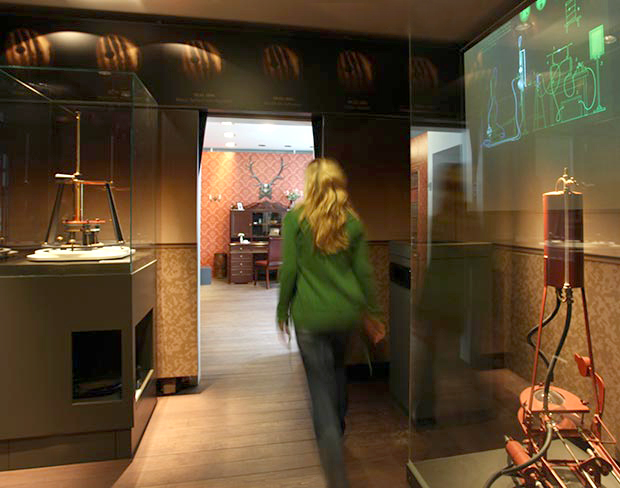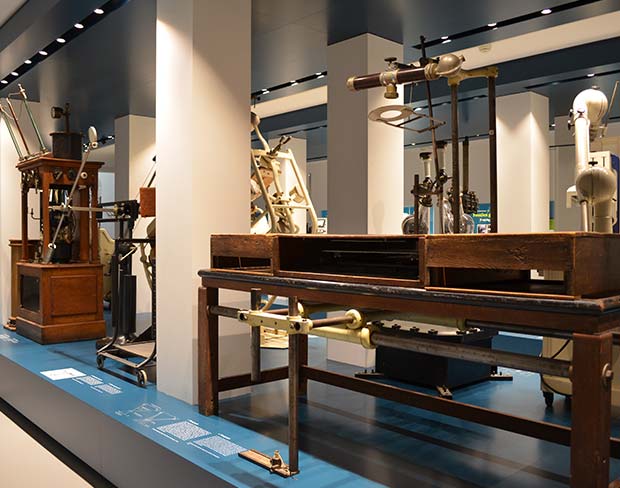Our Museum
The concept is: be creative, let your imagination run free and research and discover whatever and whenever you can.
There has been a German Röntgen Museum in Germany for more than three quarters of a century. Worldwide, it is THE facility which comprehensively documents the life, achievements and impact of the work of Wilhelm Conrad Röntgen – and, in addition, conveys the extensive number of fields of application for X-rays. Röntgen was a modern, creative and interdisciplinary mind at work around 1900. He set new standards with his discoveries and created a quality seal of approval for top performances in the area of scientific research and development. We are indebted to him for the mark of distinction “Made in Germany” in engineering, technological, scientific and research fields. Röntgen was the first ever Nobel prize winner, a man that himself set very high standards with the honour of this award.
We can therefore say with pride that our Museum is dedicated to the ideas of Röntgen and to topics and themes surrounding the whole complex of X-rays – and that we shall be just as creative and approach things in just such a modern way as Röntgen himself once did. Being the only facility of this kind worldwide, the German Röntgen Museum has decided to embark on a new course over the next few years. What does this mean? We are undergoing a transformation process, extending our offer and changing from a specific scientific Museum to a practical, hands-on theme Museum. The concept in all this is: creative research and exciting discoveries for everyone interested in having just that.
One exhibition, many questions
There is a lot to be learnt about X-rays from their discovery right up to their many applications.
We show just exactly what X-rays are all about on an exhibition area of some 2,100m² in the German Röntgen Museum. By using the example of Wilhelm Conrad Röntgen, everything can be explored on a tour through the history of X-rays – how they were discovered and researched as well as fields of application. Of course, there is also a lot to learn and discover about Germany’s first Nobel prize winner. In the two rooms dedicated to our temporary exhibition, we particularly emphasise the diverse ways in which X-rays can be used. We provide answers to questions, revive labs from yesteryear, show the numerous, modern application possibilities and make this era of German research history tangible and perceivable.
Again, something quite different
In our special exhibition areas, there is a particular focus on the role of technology and science in today’s society.
We frequently have ideas to incorporate special exhibitions relating to various themes into our Museum. Why? Because the whole complex of X-rays offers a whole lot more and because the history of science and technology cannot be explained away in just a few minutes. Our special exhibition areas take up a specific aspect and focus particularly on the role of technology and science in modern-day societies.
Moreover, our special exhibitions are often accompanied by a series of lectures, symposiums and workshops. In this way visitors are enabled to actively discuss about the role of technology and science. What do such scientific advances mean for a modern society? How much further can we go with technology? What is allowed and permissible from a scientific point of view? We would like all these topics to become perceivable and tangible and trust that the young and old, the outspoken and reserved, the flamboyant and the unobtrusive boys and girls, women and men, mothers and fathers, grandmothers and great grandfathers keep on learning, understanding and experiencing. Indeed, that is our very intention.
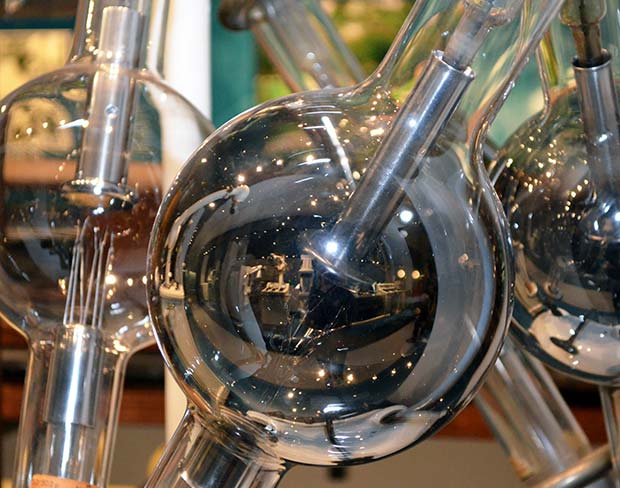
Collection pieces
We are proud of our large collection of invaluable original exhibits and historical collection items.

The collections of the German Röntgen Museum comprise more than 155,000 objects. Among our collection items there is a very high number of invaluable original exhibits and a quite unique collection worldwide of appliances to detect, research and apply X-rays across all scientific areas. In this respect the collections are not limited to any specific theme or topic. They include objects from the area of medical diagnostics and therapy as well as devices for the non-destructive analysis of materials and substances. However, our collections also include baggage and body scanning equipment, ancient Egyptian mummies and X-ray telescopes. The exhibits can be roughly allocate to a period ranging from the end of the 19th century up to the present-day. Even today, the collection of historically important items is one of the core missions of the German Röntgen Museums, meaning that our portfolio is continually growing.
All of the collection items reflect significant scientific developments or advances in X-ray technology and even include aspects of current research. About one quarter of the collection items can be seen in our exhibition, the other pieces of the collection are housed in our off-site facility at Radevormwald-Dahlerau. Here, we also keep our large radiotherapy equipment and a complete X-ray bus for serial X-ray examinations. Our off-site facility can also be viewed by special appointment. Moreover, under the title of “Exhibit of the month”, we requently display some of these outstanding pieces of scientific and technical equipment.
